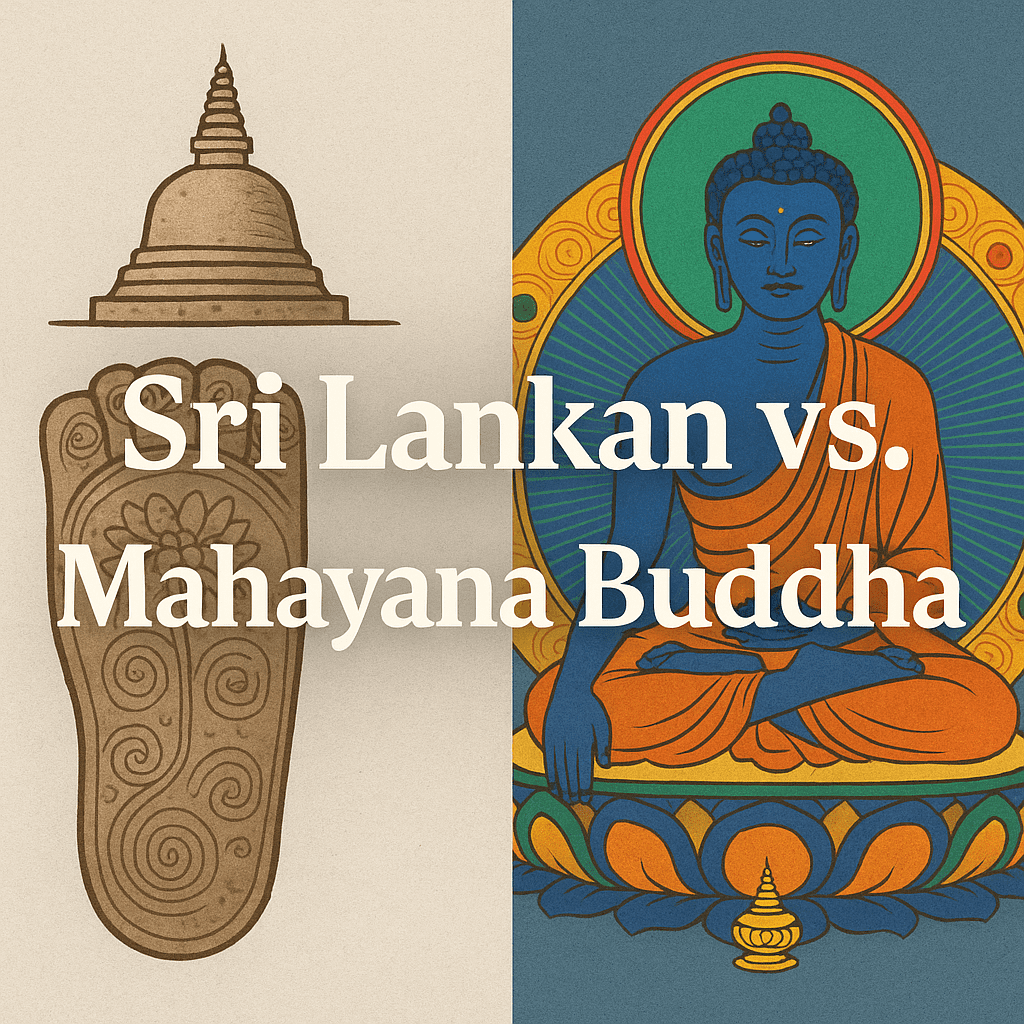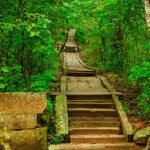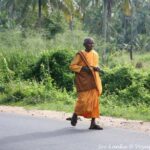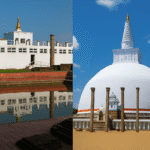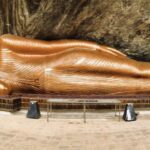In the quiet hills of Sri Lanka lies a truth long overshadowed: that the historical Buddha may have walked this land, leaving behind sacred footprints rather than grand statues. Over time, the rise of Mahayana cosmology and the misinterpretation of Lanka’s symbolic worship practices shifted global understanding of the Buddha’s origin—from Lanka to India. This article uncovers the distinctions between Sri Lanka’s historical Buddha and Mahayana’s Five Cosmic Buddhas (Dhyani Buddhas), and explores how colonial archaeology and spiritual symbolism played a role in reshaping history.
1. Early Sri Lankan Worship: Footprints, Not Statues
- Sacred Footprints: Adam’s Peak (Sri Pada) contains a revered footprint believed to have been left by the Buddha during one of his three visits to Lanka, as noted in the Mahavansa and Rajavaliya.
- Symbols over Statues: Early Buddhists in Lanka used footprints, Bodhi trees, empty thrones, and Dharma wheels—not statues—to represent the Enlightened One.
- Archaeological Support: Footprint stones are found across Anuradhapura and other ancient cities, predating the introduction of anthropomorphic Buddha images.
Reference: Wikipedia – Adam’s Peak, Tibetan Buddhist Encyclopedia
2. Mahayana’s Five Cosmic Buddhas: Origin and Symbolism
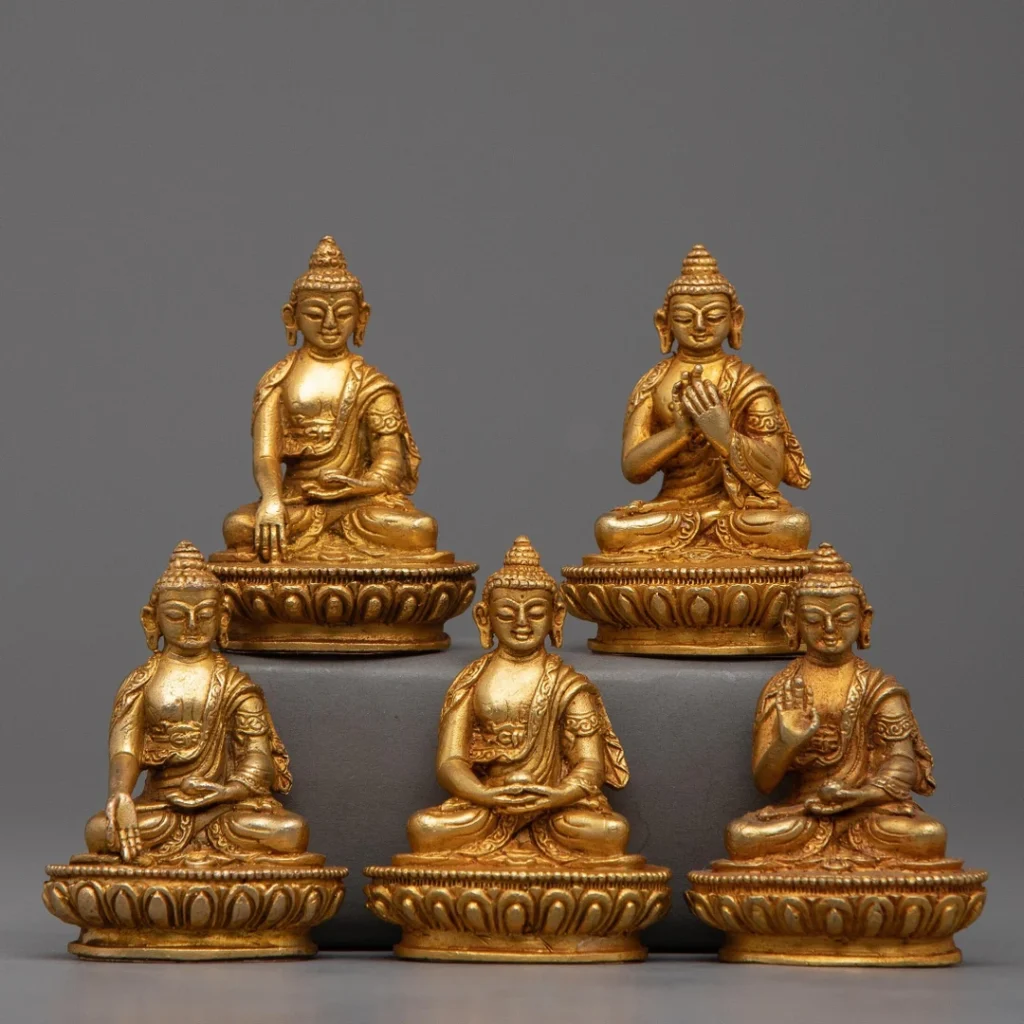
The Mahayana tradition, emerging centuries later, introduced the concept of Five Dhyani Buddhas, not as historical figures but as personifications of cosmic wisdom:

| Buddha | Direction | Color | Mudra | Symbol |
|---|---|---|---|---|
| Vairocana | Center | White | Dharmachakra | Dharma Wheel |
| Akshobhya | East | Blue | Earth Touching | Vajra |
| Ratnasambhava | South | Yellow | Generosity | Jewel |
| Amitabha | West | Red | Meditation | Lotus |
| Amoghasiddhi | North | Green | Fearlessness | Double Vajra |
- These Buddhas are part of mandalas and are central to Tantric meditative rituals.
- They represent transformation of inner poisons into wisdom (e.g., Akshobhya transforms anger into mirror-like wisdom).
Reference: Wikipedia – Five Tathagathas, Himalayan Art
3. Differences Between Lanka Buddha and Mahayana Buddhas
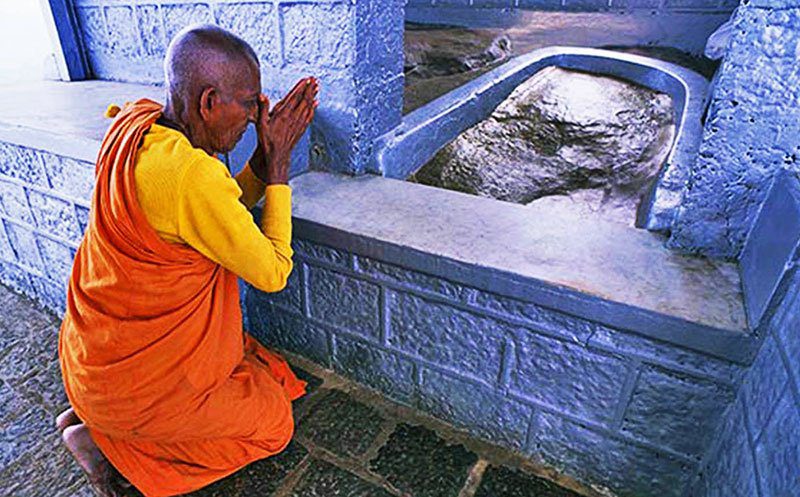
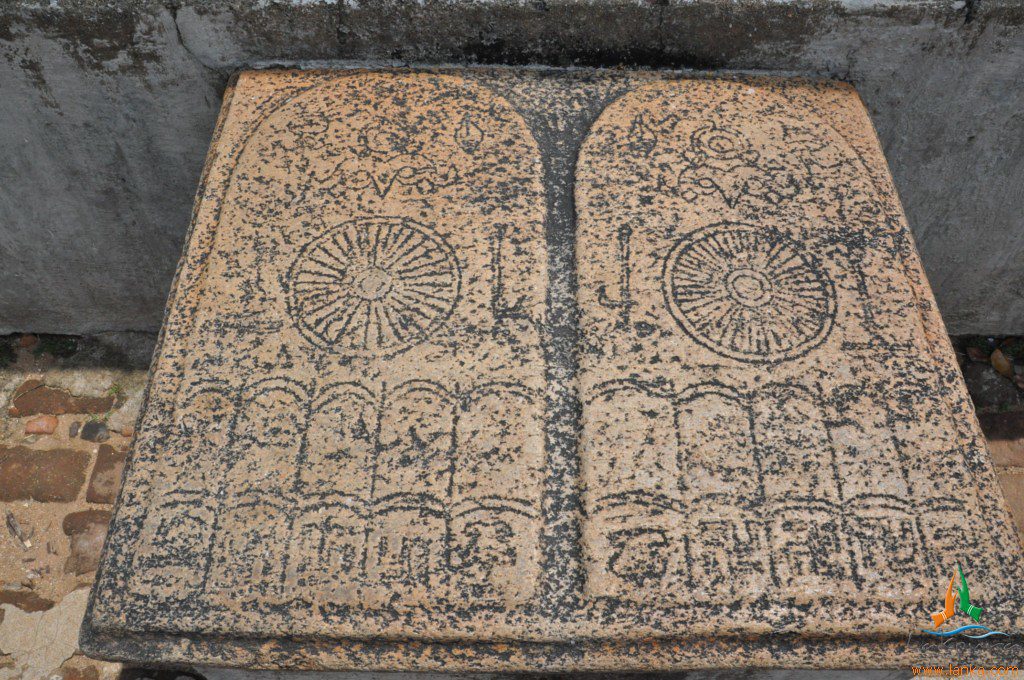
| Feature | Lanka Buddha (Theravada) | Five Dhyani Buddhas (Mahayana/Vajrayana) |
| Nature | Historical, human teacher | Cosmic, timeless archetypes |
| Worship Object | Footprints, Bodhi trees | Mandalas, statues, symbols |
| Iconography | Simple or absent in early era | Colors, symbols, mudras, auras |
| Goal | Nirvana through Arahant path | Enlightenment via Bodhisattva ideal |
| Doctrinal Source | Pali Canon (Tipitaka) | Mahayana Sutras, Tantras |
4. Scholarly Misunderstanding: How Buddha Was “Moved” to India
- Colonial archaeology emphasized statues and monuments as valid proof of Buddhist presence.
- Lanka’s relic-based culture (footprints, stupas, palm-leaf texts) was overlooked as “undeveloped.”
- Alois Anton Führer, the German archaeologist who declared Lumbini as Buddha’s birthplace, was later exposed ;for fabricating inscriptions.
- These misreadings allowed India’s statue-rich sites (like Bodhgaya) to overshadow Sri Lanka’s authentic oral and textual traditions.
Reference: Wikipedia – Alois Anton Führer, Encyclopedia of Religion – Buddhist Art in Sri Lanka
Read: Alois Anton Führer & the Lumbini Pillar: A Flawed Discoverer of a Genuine Site
5. Timeline: From Footprint to Forgotten
- 3rd Century BCE – 5th Century CE: Footprint shrines dominate Lanka (e.g., Sri Pada).
- 7th–13th Century CE: Mahayana and South Indian influences bring in statue culture.
- 19th Century: Colonial archaeologists elevate Lumbini and Bodhgaya.
- 20th Century: Global Buddhism shifts its image toward Mahayana cosmic forms.
Conclusion
The Five Dhyani Buddhas represent an advanced symbolic system of meditation and wisdom—but they are not the same as the historical Buddha who taught on Earth. The Buddha of Lanka was a teacher, not a symbol. He left footprints in stone, not visions in clouds. Recognizing the difference is key to rediscovering a forgotten truth.
